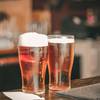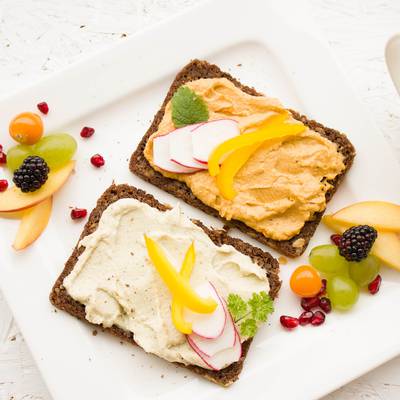General
Transport
People
Accomodation
Food & Drink
 What is the local food like in Germany?
What is the local food like in Germany?
 How much does the food cost?
How much does the food cost?
 What are some places to eat?
What are some places to eat?
 What local dishes to try in Germany?
What local dishes to try in Germany?
 Can I drink tap water in Germany?
Can I drink tap water in Germany?
 What soft drinks are available?
What soft drinks are available?
 Is there a coffee and tea culture in Germany?
Is there a coffee and tea culture in Germany?
 What beer concoctions to try in Germany?
What beer concoctions to try in Germany?
 What other alcoholic drinks to try while in Germany?
What other alcoholic drinks to try while in Germany?
 What are the restrictions regarding alcohol consumption?
What are the restrictions regarding alcohol consumption?
 Where to buy alcohol in Germany and how much does it cost?
Where to buy alcohol in Germany and how much does it cost?
Sightseeing
Legal
Money
Safety & Health
Family travel

What can I eat in Germany as a vegetarian?
When you think of German food, you probably think of heavy, meaty dishes. Platters of sausage, crispy pork knuckle, and whole roasted suckling pig at Christmas. Complicating things further, bacon can find its way into any dish and butter and cream are used lavishly in sauces and dressings. But that's not all German cuisine offers. There are an estimated six million vegetarians in Germany and they've gotta eat too. While you may have trouble finding options in small country villages, cities like Berlin and Hamburg are full of vegetarian and vegan options. Berlin was even named The New Vegetarian Capital of the world by Saveur in 2015. And even at the most traditional restaurants, there are options suitable for vegetarians and vegans.
Spätzle. Essentially a German form of macaroni and cheese, Spätzle is so much more. A Swabian specialty that is loved throughout the land, these egg noodles are the perfect belly-filling meal. To amp up the deliciousness, order Käsespätzle (cheese Spätzle) which comes with gooey Emmenthal cheese and sweet and crispy fried onions. A staple of festivals and restaurants alike, this is the vegetarian go-to at one of the meatiest of all Fests, Oktoberfest. And for vegans, some restaurants specialize in vegan versions without the eggs and cheese and with the tastily fried onions.
Spargel. For any vegetarian who feels like vegetables are treated as a side dish, Spargelzeit is magic time for you. The king of vegetables, white asparagus, is treated with utter reverence from March until mid-June every year. It is on every German menu and palate and the country even has to import the stuff from Spain as they can't keep up with the demand of almost 70,000 tons consumed per year. Don't forget to try Frankfurter Grüne Soße (green sauce) and Bärlauch (wild chives) in spring, Rote Grütze (berry compote) in summer, and Pfifferlinge (Chanterelles mushrooms) in early fall.
Kartoffelpuffer. How can a humble potato pancake taste this good? Germans have a way with potatoes and the way they craft this shredded version into fluffy interior/crunchy exterior patties is a thing of beauty. At most fests and markets, they are also served in sit-down restaurants. Also known as Kartoffelpfannkuchen (literally potato pancakes) or Reibekuchen in the Rheinland (Cologne area), this salty veggie dish is usually topped with Apfelmus (applesauce), but may also come with savory toppings like Leberwurst, Lachs (smoked salmon) and Frischkäse (sour cream).
Flammkuchen. The Alsatian form of pizza is impressively served on a giant wooden paddle – but have no fear. It is a fairly light dish with crispy, cracker-like crust and topped with crème fraîche, sliced onions, marjoram, and Speck (bits of bacon). Vegetarians can just leave off the speck or order one of the other million variations. Vegans can also safely eat this dish (with preferred toppings) as the crust is a simple mix of flour, water, and olive oil.
Bread & Cheese. Bread and cheese may sound like a disappointing substitute for non-meat eaters, but it isn't if it's regional favorites like good German bread and cheese such as Obatzter/Obatzda. This particular Bavarian favorite is a spreadable mix of soft cheeses, butter, and spices and is topped with onions and fresh herbs. In 2015, Obatzter was even granted PGI (protected geographical indication) certification like Cologne's Kölsch Beer. It is usually paired with Laugengebäck (baked goods with a crusty exterior) like pretzels. It is a favorite of Biergartens and also fit for a light dinner at home in the tradition of Abendbrot.
Semmelknödel mit Pilzen. Potato and bread dumplings come with many different names and formations but are a great dish for vegetarians to enjoy German cuisine. Look for Knödel, Klöße or the aforementioned Semmelknödel. Vegans should note that they may be made with egg and milk, but there are vegan-friendly varieties. Just use the terms above to find out if the version on the menu is good enough to eat. They also may come with a very meaty sauce, but one of Germans other favorite things offer an ideal alternative – mushrooms. Known as Pilzen or Champignon, these sauces are usually even vegan-friendly, unless it is Rahmschwammerl which is creamed mushrooms with loads of butter and cream as well as a hefty dumpling or two.
Salat. It's not uncommon to find some carefully rolled ham slipped into your green leaf salad, but that does not mean that a delicious vegetarian salad is off-limits in Germany. For example, Gurkensalat takes advantage of fine German cucumbers, usually lightly dressed with vinegar. On the other hand, Kartoffelsalat is usually much different than most people are used to and another dish that Speck always seems to find its way into.
Turkish & other Ethnic Food. You might not consider Turkish food a traditional meal for Germany, but the considerable Turkish population has left a deep impact on the country and cuisine. While the omnipresent Döner on a spit catches most of the attention, Turkish restaurants are actually a haven for vegetarians and vegans. Eat your fill of Gemüse Kebab, bulgur salads, Kumpir (Turkish baked potato), Gözleme, Kısır, Falafel, Simi Note that trusty vegetarian ethnic options like Italian, Thai, Mexican, and Indian are also largely available, especially in bigger cities. Hungarian Langos – fried flatbread made of flour, yeast, salt, and water – can be a surprise veggie option at festivals.

Where to buy alcohol in Germany and how much does it cost?

What are some things to do in Germany with children?

How do I use ATMs in Germany?

What are the restrictions regarding alcohol consumption?

How to get to Frankfurt from the airport?
